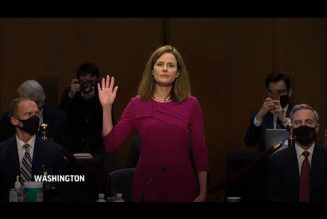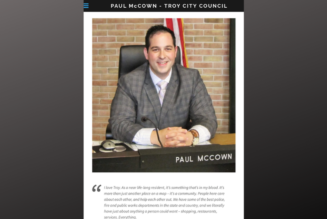
I recently attended a family wedding at the parish that I grew up in—a parish under the patronage of St. Patrick in a small, historically Irish and German midwestern town. It was an endearing reminder for me of how slowly things can change when it comes to liturgical practice—a double-edged sword that both serves to help preserve tradition but also makes efforts of renewal at times a serious practical challenge.
In my youth, I remember hearing and singing one of two possible Alleluias before the Gospel reading on just about any Sunday: either the Mode 6 chant alleluia (you know the one) at a drearily slow tempo, or the “Celtic Alleluia,” which is a bit more lively with a lilting 6/8 rhythm. I am not sure that I could have been convinced at the time that any other Alleluia had ever been sung, or that any others even existed. And so it wasn’t surprising to me when I heard the same Celtic inspired Alleluia tune sung at my family wedding, even though I probably had not heard it in nearly a quarter century.
I suspect that my early experience of the Alleluia is like that of many US Catholics today. For various reasons, a few melodies have gained currency in parishes and seem to have stuck—to the point that the Alleluia, and its counterpart during Lent, have largely lost their true character as a part of the Proper of the Mass, and are more commonly seen as a relatively static “Mass Part” like the Gloria or Holy, Holy.
But the melodies for the Alleluia and their proper scriptural verses are meant to be varied, with the capacity to introduce a level of musical commentary into the Mass as it unfolds throughout the liturgical year. This added meaning is entirely lost when the same melodies are used over and over without variation.
This article is intended as a guide to help the Gospel Acclamation regain its rightful and noble place in our parish liturgies today as an integral and varied part of the Proper of the Mass, along with an implementation plan to help you progress toward this aim at whichever pace your parish requires.
A Rite or Act in Itself
First, we should understand what the Gospel Acclamation is and what it is not. Unlike the Entrance, Offertory, and Communion Chants that serve the purpose of accompanying a liturgical procession, the Alleluia is a liturgical action in and of itself (see GIRM 62). The Alleluia itself, like the Responsorial Psalm, the Gloria, the Sanctus, and other similar parts of the Mass, should be our primary point of focus when it is sung.
With all due respect and filial affection to any of our beloved deacons reading this article, I am afraid to say that the procession to the ambo with the Book of the Gospels held high is not the point of focus as the Alleluia is sung. Instead, the entire liturgical assembly is invited into a moment of praise and of preparation to hear the voice of Christ who is about to speak to them in the proclamation of the Gospel.
The text of the Gospel Verse is a proper element of the liturgy, meaning that it changes from day to day like the readings, Responsorial Psalm, orations, and antiphons, and is not a part of the Order or Ordinary of the Mass, where the texts are unchanging. It very often quotes the heart of the Gospel reading that immediately follows it and focuses our attention on a key spiritual insight, almost like lectio divina, before we listen prayerfully and attentively to the Gospel being proclaimed.
The Gregorian Model
The model for the way that the Gospel Acclamation should be sung is given to us in the first place in the Graduale Romanum, which is the Church’s own music book for the Mass. The Gregorian chant melodies in the Graduale, all things being equal, are meant to be sung by default in the Mass of the Roman Rite. As both Pope Saints Pius X and John Paul II asserted, this music—which has formed an integral part of the liturgy for well over a millennium—serves as the “supreme model” of sacred music, or, as William Mahrt puts it, as the “paradigm” that all other musical possibilities are oriented toward.
The arrangement of the Alleluia chants (and Tracts, during Lent) in the Graduale are intentionally and significantly varied. In fact, there are over 150 unique Alleluia melodies for use in a single year. When paired with their unique verse melodies, the number exceeds 300 unique chants. Rather than giving parishes a variety of options to select from, though, the Graduale prescribes specific Alleluia melodies with specific verse texts and melodies for each and every specific Mass throughout the entire year. And the arrangement is far from arbitrary or incidental. Certain modalities are paired with the character of particular texts and liturgical celebrations, and the melodies used form a musical tapestry that offers a level of spiritual insight that cannot be discerned from the texts alone.
Simpler Chant Melodies
Since the Alleluia melodies in the Graduale Romanum are among the most musically ornate in the Gregorian chant corpus, they are usually only sung well by a trained cantor or schola cantorum and are not always within the reach of smaller parishes with fewer resources. It is for this reason that the Second Vatican Council called for a collection of simpler chants to be assembled for use in smaller churches that lack the resources to achieve the fullness of the sung liturgy week after week.
The result was the Graduale Simplex, first published in 1967, which is a collection of simpler Gregorian chants largely drawn from the Divine Office but arranged for use in the Mass. It also contains an excellent collection of chant-based alleluias for use throughout the liturgical year in a simplified arrangement, but in varied ways similar to that of the Graduale Romanum.
The majority of the alleluia melodies in the Simplex are triple alleluias, meaning that the word alleluia is repeated three times within a single melody, while the melodies themselves are rather simple and well within reach of congregational singing.
Graduale Simplex Alleluias with English Verses
While the text of the Alleluia refrain is in Hebrew and carried over directly into English, Spanish, and other vernacular languages, the verses of the Gospel Acclamation in the Graduale Romanum and Graduale Simplex are in Latin. The source for Gospel Verses in English is the Lectionary for Mass, where no melodies are provided. Conveniently, the alleluia refrains of both of the Church’s chant books for the Mass can be paired with Psalm tones that can be used with any Gospel Verse text in English.
Here is an example with audio recordings of the 10 simple chant alleluias that are contained in the Source & Summit Missal, mostly drawn from the Graduale Simplex, all setting the same Gospel Verse text for the sake of demonstration. You can click on the playback button in the upper right corner of each setting to hear it sung right in this Ordo produced by the Source & Summit Digital Platform, and even download a PDF score with or without accompaniment to try them out for yourself.
What is Sung During Lent?
The General Instruction of the Roman Missal instructs that in place of the Alleluia during Lent, the Verse before the Gospel is to be sung, as found in the Lectionary or the Graduale. Strictly speaking, this verse has no refrain or acclamation. It is merely a Gospel Verse without an alleluia or anything else prior to or following it. In the Graduale Romanum, there is no Gospel Acclamation or refrain provided for singing, but only a (sometimes very lengthy) verse called the Tract. The Lectionary follows this model, and allows the Gospel Verse alone to be sung during Lent, but it also provides several Lenten Gospel Acclamations that can be sung at will in place of the Alleluia refrain, following a similar form.
Here are some examples that employ this model, with chant melodies set in the style of the Graduale Simplex.
Models for Elevating the Gospel Acclamation in Your Parish
For most parishes, an achievable goal for elevating the Gospel Acclamation is to introduce a reasonably varied cycle of alleluia melodies in the Simplex style, paired with the proper English (or Spanish) verses from the Lectionary.
The Source & Summit Missal provides a relatively simple and stable arrangement of alleluias for use throughout the entire liturgical year in this way. Ten alleluia refrains are used in total in the entire missal, with a single setting used for Advent, another for Christmas, a single acclamation for Lent, two melodies for Easter, and four that cycle through Ordinary Time. The other major categories of Feasts and Solemnities also receive their own melody so that, when they occur throughout the course of the year, they have a somewhat different character than Sundays.
This plan provides a parish repertoire of Alleluias that can endure over time while offering variety that is typical of the Proper of the Mass. Its internal logic also highlights the different dimensions of the liturgical year, all while blending seamlessly into the other parts of the sung liturgy.
The Source & Summit Gradual collection, which can be found on the Source & Summit Digital Platform, offers a slightly more varied plan, where the modality of each Simplex alleluia corresponds to the Alleluia mode used in the Graduale Romanum. In this way, interchange between the actual melodies of the Graduale becomes easier for parishes that can make use of it more regularly.
Where to Begin
If your parish context is anything like the one described at the outset of this article—and for many US parishes, it is—then you are most likely in need of a gradual implementation plan to help your parish elevate the Gospel Acclamation.
Here are a few strategies that can be of help:
First, you can select an annual arrangement of alleluias—such as the Source & Summit Missal or Gradual plans above, or perhaps even one of your own—that you want to implement fully in time. Committing yourself to a set arrangement helps protect against arbitrary use of alleluia melodies based on preference or familiarity, as well as overusing a single setting to the point where you might want to retire it entirely (if you can) and move onto the next, creating an “out with the old, in with the new” approach to the Alleluia.
It may not be prudent for you to roll out the new plan, with all of its variety, out of the gate all at once. Instead, you might choose to introduce new melodies from the plan one by one, giving your parishioners enough time to acclimate to them and to internalize them before being introduced to another. If your parish has adopted the Source & Summit Missal, you might consider introducing only one Alleluia melody per season for the first year or two, or even a new melody for several seasons at a time. Once all of the melodies as they are presented in the missal are eventually learned, then the more varied and stable plan can begin to settle into place, with your parishioners fully onboard.
In my own experience, the greatest challenge in parish musical renewal is not the introduction of new music so much as the discontinuance of the old. More often than not, when some parishioners express discontent about musical changes it is actually less about not liking the new music and more about the sense of loss that they feel when they no longer hear the music they have become familiar with. For the first year or two of your implementation process, you would probably do well to keep some of the more familiar settings in the mix, in between the introduction of new melodies. In time, once the plan begins to settle in, some of the other melodies can begin to fall away naturally, and most of your parishioners will not even notice that they are gone.
Practically speaking, tools like the Source & Summit Digital Platform can help make this transitional process simple and easy since it allows you to apply any alleluia melody and corresponding psalm tone to any Gospel Verse text in the Lectionary. Among many other benefits, this tool can help your transition from where you are to where you desire to be in time a simple and almost automated process.
If you would like to try the Source & Summit Digital Platform for yourself, you can sign up for a free 30-day trial here.
Liturgical Renewal is a Process
True and lasting liturgical renewal in pastoral contexts is best achieved through a gradual process rather than a sudden leap. Over-communicating clarity with your parishioners and offering ample catechesis will always be essential, but, since beauty is its own argument, we can also trust that the Light of Christ will radiate from liturgical rites that are beautifully carried out and artfully prepared.








